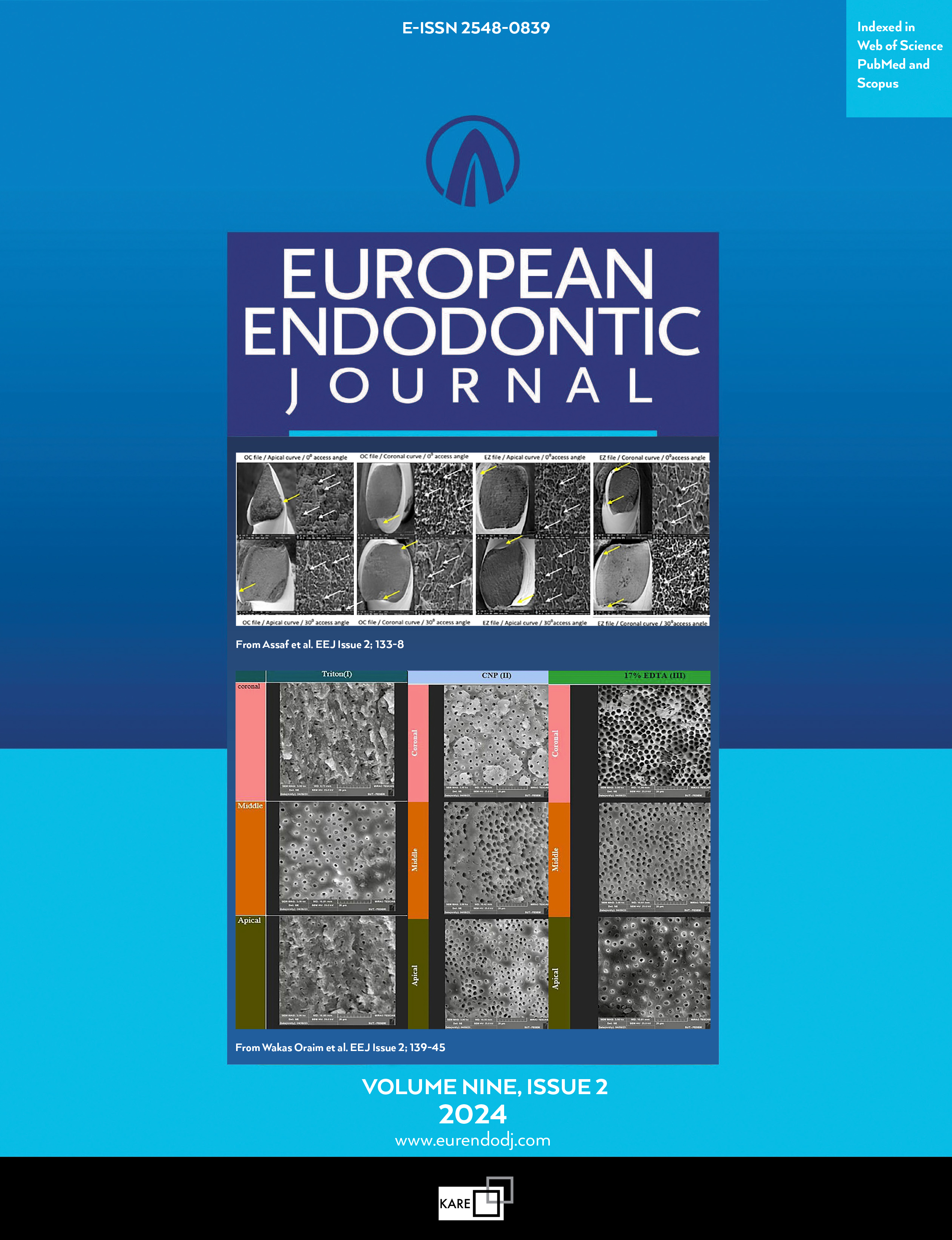Metrics
2022 IMPACT FACTOR
5 year Impact Factor
Eigenfactor
2022 CiteScore
Journal Citation Reports (Clarivate, 2023)(Dentistry, Oral Surgery & Medicine (Science))
Quality of Root Canal Fillings Performed by Undergraduate Students and the Related Factors on the Treatment Outcome: A 2- to 5-Year Follow-Up
Nikolaos K. Polyzos1, Kyriakos G. Sarris1, Afroditi I. Pita2, Georgios V. Mikrogeorgis1, Kleoniki M. Lyroudia11Department of Endodontology, School of Dentistry, Aristotle University of Thessaloniki, Thessaloniki, Greece2Department of Oral Health and Diagnostic Sciences, School of Dental Medicine, University of Connecticut Health Center, Farmington, CT, United States
Objective: To evaluate radiographically the quality of root canal fillings performed by undergraduate students between 2012 and 2015, and to investigate the impact of their quality in correlation with root type, preoperative periapical status, and type of restorative treatment on the treatment outcome.
Methods: Six hundred seventy-seven non-surgical root canal treatments were performed by undergraduate students from the Aristotle University of Thessaloniki at the endodontic department clinics between 2012 and 2015. Two hundred forty-four teeth (349 roots) fulfilled the criteria and were clinically and radiographically re-examined between 2016 and 2017, and the outcome was classified as success or failure. Root canal fillings were radiographically evaluated in terms of apical extension and density. The root filling was classified as acceptable when both parameters were rated as acceptable. Statistical analysis was performed using generalized estimating equations. Pairwise comparisons were performed by the sequential Bonferroni method. Intra-examiner and inter-examiner agreements were checked by the intraclass correlation coefficient and Cohens kappa. The statistical significance level was set at p<0.05.
Results: The percentage of the roots with acceptable root canal fillings was 40.4%. The molar roots demonstrated the lowest rate (30.7%) compared with the anterior (53%, p<0.05) and premolar teeth (43%, p>0.05). The results of the correlation of the quality of the root canal fillings with the root type, preoperative periapical status, type of coronal restoration, and the treatment outcome showed that the unacceptable quality of root canal filling in relation to root or presence of periapical lesion or crown revealed the lowest success rates (47.2%, 40.3%, and 52.3%, respectively). In contrast, results showed that roots with canal fillings of acceptable quality demonstrated success rates close to 90%, regardless of the other variables.
Conclusion: Within the limitations of the present study, the percentage of radiographically acceptable root canal fillings performed in the undergraduate clinic of the Department of Endodontology at Aristotle University of Thessaloniki was low (40.4%). Results showed that there was a strong association of higher success rates with root fillings of acceptable quality.
Corresponding Author: Nikolaos K. Polyzos
Manuscript Language: English
(524 downloaded)


